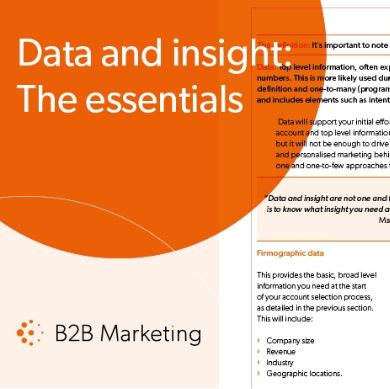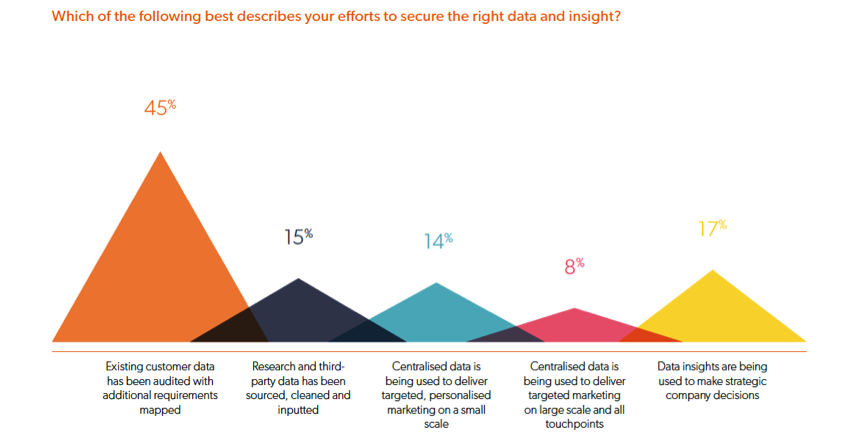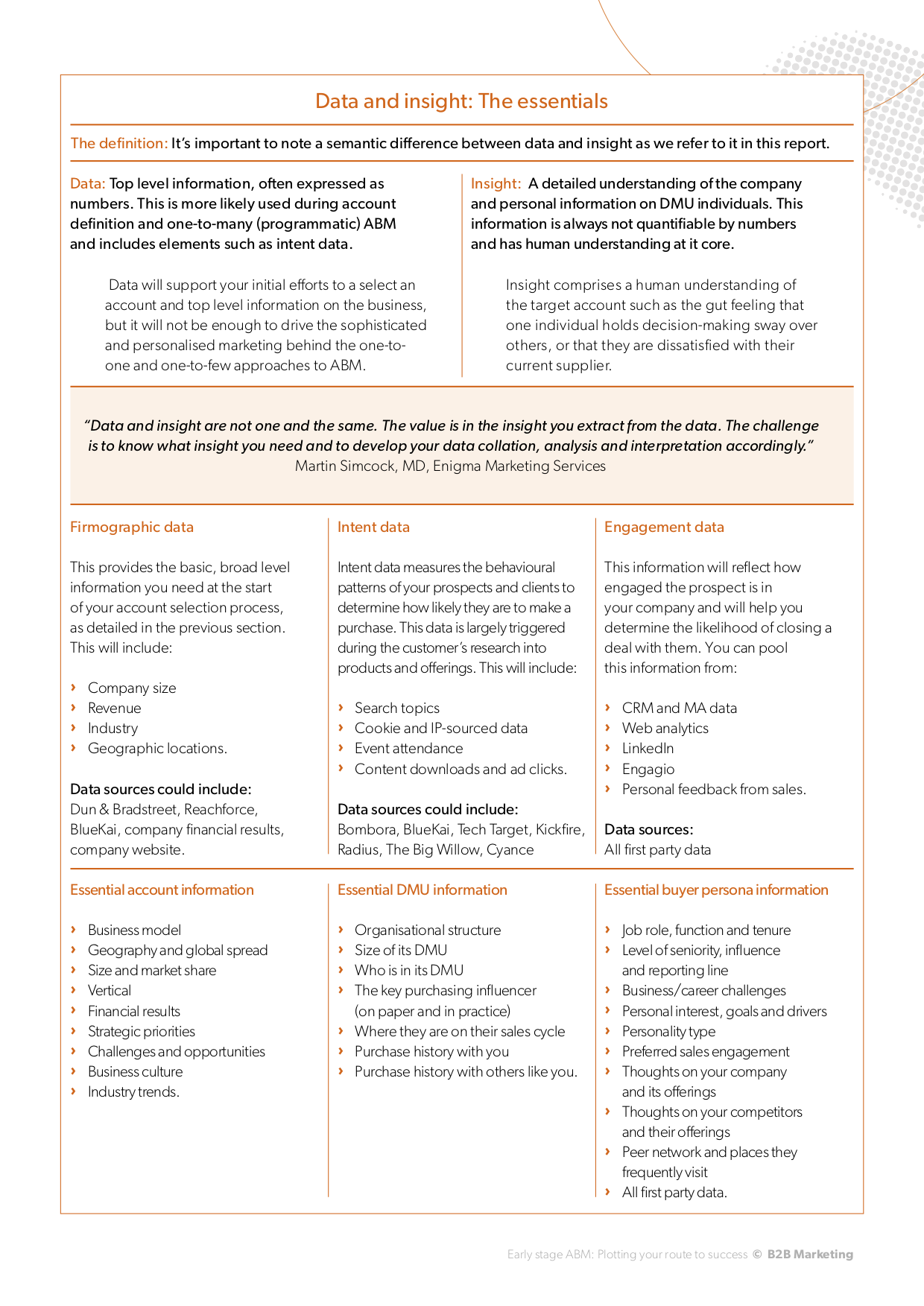How to nail the most common challenge in account-based marketing – your data and insight
86% of ABM practitioners struggle with getting enough data and insight
getting enough data and insight on your target accounts to deliver highly personalised marketing is common challenge. Here, we help you overcome that challenge by detailing what information you need, how to get it and how to overcome the most common hurdles.

In our recent report, Early Stage ABM: Plotting your Route to Success, we surveyed over 300 ABM practitioners in B2B marketing and asked what their biggest struggle was.
The clear and resounding answer was data.
Account-based marketing is a data-driven approach and marketers need extensive information on their accounts to make informed moves, particularly at two crucial junctions:
Account selection – when they decide which companies to target and how many;
Campaign planning – when they determine the type of bespoke, targeted marketing that will enable them to close a deal. The wrong information, or not enough, will severely impede progress.
It’s a common and sizable challenge, but nailing it will not only unlock your ability to deliver a successful ABM campaign, it will support your position as a data-driven team, able to respond to both the needs of the customer and business through hard facts.
How to make data and insight collection easier
- Audit your existing account data, using external data providers to plug the gaps where needed. Doing it all internally can create more friction and delay than it’s worth.
- Reassess your account selection. Do you have too many accounts? Are they too hard to reach?
- Understand how your sales and marketing team are using your CRM and make improvements to that usage.
1. The data audit
Part of the ABM journey should involve a data audit and cleanse, whereby you assess what account information you already have, what else you need and how to get it.
Many of the B2B marketers we surveyed (45%) have successfully audited their existing customer information and mapped the gaps that are left.
But filling those gaps can be hugely time consuming and put considerable burden on both sales and marketing – this in turn can create conflict between the two groups, plus long programme delays.

Thankfully, there is a vast richness of data available to marketers from third-party providers.
It’s likely you will need to stitch together a patchwork of third-party data providers in order to collect the full breadth of information you’ll need. While this comes at a financial cost it can save a great deal of time for both sales and marketing, helping alleviate any friction or frustration during this stage.

To view the data and insight table full-size, please click here
2. Reassess the accounts you’ve selected
It can be tempting to use account based marketing to go after big untapped brands, particularly when sales are eager to open doors to them, but don’t underestimate the amount of effort both sides will have to put in.
This is the difference between beginning the marathon with a head start versus a weight on your back.
A grow and protect ABM strategy will grant you more insights into the customer, allowing you to select and target in an informed manner.
This is where most marketers have made things harder for themselves. The majority use ABM to win new business, which is putting additional strain on their operations.
The more information you already have on an account, the better. That insight into their needs, the decision-making unit, key stakeholders and pain-points will be the framework for your ABM campaigns.
And, having a framework early on will speed up your journey and create a much clearer path. For that reason, using account-based marketing to grow and retain existing accounts will make your challenge with data and insight much easier.
3. Ensure proper use of the CRM system – by both sales and marketing
Many companies are struggling to use their existing technologies in a manner that delivers clean, up-to-date and easily accessible information.
This is a considerable blocker to the delivery of reliable information and must be addressed.
Go back to basics with your CRM and ask how effectively it’s being used. The CRM is the means by which you and sales will understand your customers; it’s not only essential you have it, but that it’s properly configured and regularly updated with clean, reliable, shareable information.
Both sales and marketing need to use the CRM system as effectively as possible. Think of it as your portal to knowledge, and to the customer.
If marketing aren’t walking through that portal they will never have full knowledge of the customer or be equally aligned with sales.
Your staff won’t become CRM superstars overnight. It may mean training or upgrades to create a more bespoke solution. Identify weak spots in your CRM adoption – this could be behavioural, cultural or down to a lack of proper training.
From this you’ll be able to closely target the people who need extra encouragement and make champions of those who are using it well.
Allocate a period of time for your staff to learn – but make it clear that once the honeymoon is over, using CRM will be non-negotiable.
